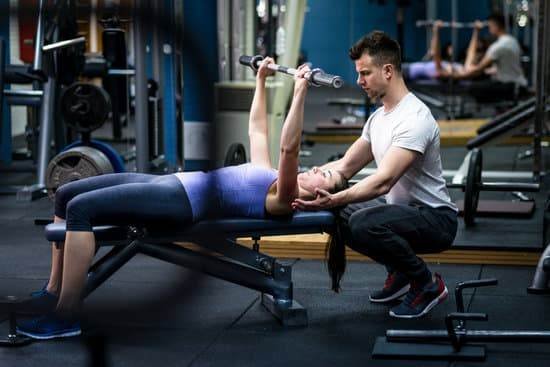Introduction
A personal trainer is a person who has the education, experience, and qualifications necessary to provide specialized instruction in health and fitness. This can include helping clients design customized exercise programs based on their individual needs, educating them on the benefits of regular physical activity, and providing motivation to stay motivated. Being a successful personal trainer requires more than just knowledge and certifications; it involves developing interpersonal skills such as communication, patience, empathy, and positive reinforcement. Additionally, one must have an understanding of nutrition as well as exercise program design for any client’s unique circumstances.
To learn everything required to become a successful personal trainer, one should start by pursuing a qualification from a credible organization such as the National Academy of Sports Medicine (NASM) or American College of Sports Medicine (ACSM). This should be followed up with practical training such as apprenticing under experienced trainers until one gains enough confidence to work independently. Before beginning work with clients, it is important that all needed paperwork and licenses be acquired.
In addition to obtaining certifications in anatomy, physiology, nutrition, exercise physiology and kinesiology, specialties such as trained professionals in rehabilitation or athletes may require additional qualifications. It is also essential that personal trainers stay up-to-date with industry trends including technological advances in fitness equipment and other physical activity resources available for clients. They must also have knowledge about different types of strength training techniques such as plyometrics and weightlifting exercises so they can properly guide their clients through workouts involving those exercises. Furthermore, understanding musculoskeletal structure and function is important for injury prevention during workouts for everyone but especially those with existing injuries or conditions. Lastly being aware of key concepts like spotting techniques when lifting weights or giving proper instruction in regards to stretching after exercise will help any personal trainer give an effective workout experience regardless of the individual’s fitness level.
Education and Certification Requirements for Personal Trainers
To become a personal trainer, it is important to acquire an appropriate level of education and certification. Personal trainers need to have a basic understanding of anatomy and physiology, exercise science, nutrition, as well as of the principles related to physical fitness and its role in health promotion. A formal education at college or university is also necessary in order to understand the concepts behind exercise programmes, teaching techniques and risk assessment.
Additionally, prospective personal trainers should complete a recognised qualification such as the Certificate IV in Fitness (SIS40215) or higher level. These qualifications are intended to teach trainees how to assess clients’ needs effectively, develop exercise programs tailored to those individual requirements and supervise their clients during sessions. The course will also cover topics such as client-trainer relationships, laws surrounding fitness training, communication skills and marketing for personal trainers. It is essential for personal trainers to stay up-to-date with industry information through ongoing professional development and many organisations offer recognition after successful completion of the courses or workshops. Furthermore, once qualified and certified some employers may require personal trainers to be registered with the relevant Health Regulatory Authorities or organizations in order for them to be able to practice legally within their jurisdiction.
Knowledge and Skills Needed to Become a Personal Trainer
Anyone interested in becoming a personal trainer needs a good understanding of cardiovascular exercise, strength training and nutrition. They should be knowledgeable about anatomy, workouts, injury prevention and body mechanics. It is important for them to have strong communication skills and the ability to motivate clients through their fitness journey. Personal trainers should also be certified by a nationally accredited organization such as the National Council on Strength & Fitness (NCSF) or American College of Sports Medicine (ACSM). In addition to taking courses focusing on exercise science, they may need to take classes in biomechanics and physiology. Personal trainers should also obtain a CPR certification and be aware of local laws relating to health and safety regulations in the area they plan on working in. Knowing how to manage client records, set goals and track progress are necessary skills for success as well. Personal trainers may also need sales experience if self-employed.(continued…)
Understanding the Fundamentals of Exercise Science and Anatomy
To be a successful personal trainer, it is important to understand the fundamentals of exercise science and anatomy. This includes an understanding of the body’s structures (muscles, organs, and their functions), how these structures interact with each other in normal motion, and how they are affected by different forms of physical activity. It also involves an understanding of nutrition, since proper nutrition is essential for optimal health and performance. Additionally, trainers must be educated on how to safely and effectively design exercise programs while taking individual differences into consideration. They should learn how to modify exercises based on an individual’s goals and limitations (including injury prevention); interpret medical histories; recognize when a medical professional needs to be consulted; and teach clients about healthy lifestyle habits. Furthermore, a strong knowledge base in physiology — such as cardiovascular and muscular systems — helps trainers prescribe suitable exercise programs for their clients. Developing excellent communication skills is also important, as this allows trainers to provide clear instructions and motivate clients towards success. Last but not least, there are certain foundational principles—such as biomechanics—that need to be incorporated into any successful training program that will help create effective workouts for clients.
Understanding Physiology and How it Relates to Training
To become a successful personal trainer, it is essential to have a deep understanding of human physiology as it relates to training and exercise. This includes understanding the basics of anatomy and how each muscle functions in relation to movement. You should also understand which areas of the body are being used with certain exercises and other activities, such as aerobic activity and weightlifting. A comprehensive knowledge of nutrition is also key for personal trainers, as proper nutrition can help their clients reach their health and fitness goals. Additionally, having an understanding of the science behind different types of training will equip you to create more effective workouts tailored to individual needs. Finally, it’s important to learn about injury prevention so that your clients are able to keep exercising without fear of further harm. Knowing which types of exercises should be avoided by people with certain preexisting injuries or conditions is also important for ensuring safety in your gym or studio.
Practicing Proper Exercise Form and Technique Instruction
Personal trainers need to understand proper exercise form and technique instruction in order to effectively train their clients. The foundation for exercise success begins with proper form and technique, as this helps reduce the risk of injury and maximize the efficiency of exercises. Personal trainers should know the correct anatomy, bio-mechanics, and physiology behind a movement so that they can accurately explain and demonstrate it to their clients. Additionally, personal trainers should understand the range of motion necessary to perform each exercise safely and effectively while understanding its purpose within an overall program. Furthermore, personal trainers need to be able to modify movements based on a client’s physical ability level. They also need practice proper cueing through verbal instructions in order to accurately coach an individual through their own movement pattern. Finally, personal trainers should provide feedback on how they can make corrections if needed.
Familiarity With Different Types of Fitness Equipment
To be a successful personal trainer, you will need to have a good knowledge of fitness equipment. You should know how to properly use machines like treadmills, exercise bikes, weight machines, and elliptical trainers for various exercises. You should also be familiar with free weights such as dumbbells, barbells and kettlebells, as well as stability balls, medicine balls, TRX systems and resistance bands. Knowing how each piece of equipment works and its potential uses is essential in being an effective trainer.
Understanding Human Anatomy
In order to be a successful personal trainer, you must understand human anatomy. This knowledge allows trainers to devise safe yet effective fitness programs that are tailored to the needs of their clients. A basic understanding of skeletal, muscular and cardiovascular systems is key in order to create workout regimens that target different muscle groups while minimizing injuries. Additionally, knowledge of biomechanics can help explain why some exercises work more effectively than others under certain conditions.
Knowing How To Motivate Clients
A great personal trainer knows how to motivate their clients in order to keep them coming back for more workouts. Inspiring your client via positive reinforcement and enthusiasm about achieving their goals can make a big difference when it comes to helping them reach their desired level of fitness success. It helps if you have interpersonal skills like strong communication or the ability to relate to people on both a physical and emotional level—this will help increase the likelihood that your client will stick with the program you have designed for them.
Understanding Safety Procedures for Fitness Activities
It is essential for aspiring personal trainers to understand and be able to properly implement safety and health protocols when working with clients. According to the American College of Sports Medicine, a personal trainer should possess the expertise to assess, design and monitor individualized exercise programs that address a variety of fitness goals. Therefore, amongst other important aspects such as monitoring exercise form and detailing nutrition plans, knowing how to recognise and deal safely with an emergency situation is a must-have requirement when it comes to being a personal trainer. It is paramount that potential trainers obtain qualifications in first aid as well as CPR (cardiopulmonary resuscitation) in order to be prepared for any eventuality while working with their clients. Additionally, they will also need to be aware of any medical conditions or past injury history that could adversely affect the client’s longevity during exercise sessions. Finally, understanding ergonomics and posture can help protect the client from developing longterm issues due poor technique during movement. A combination of theoretical knowledge coupled with practical application can ensure that the personal trainer is capable of safely guiding clients throughout their program whilst educating them about all things related to health and wellbeing.
Nutrition and Dietary Guidelines and Practices
Nutrition is an important part of being a successful personal trainer. Personal trainers need to have a strong understanding of dietary guidelines and practices that are recommended for clients in order to help them reach their health and fitness goals. This includes an understanding of the basics of nutrition through macronutrients, vitamins, minerals, food labels, and how diet affects health. Additionally, personal trainers should know about different diets such as vegan or paleo, as well as how to safely manage restrictive eating plans such as intermittent fasting and ketogenic approaches.
Exercise Science
To be a successful personal trainer it’s important to have a solid foundation of exercise science and be familiar with many forms of exercise protocols. Personal trainers need knowledge on how different types of exercise affect the body such as cardiovascular training, weight lifting, HIIT workouts, plyometrics and circuit training. On top of this, they must also understand anatomy related topics such as muscle groups and joint functions in order to devise safe exercises for their clients. Being able to demonstrate proper form for any given exercise is essential for avoiding injury in clients and maximizing results.
Injury Prevention
Since clients are at risk for physical injuries when engaging in physical activities or strenuous workouts, it’s important for personal trainers to have comprehensive knowledge in preventing common injuries from occuring during any given session or program. This may require an awareness of existing client musculoskeletal injuries or conditions with specialized corrective exercises according to their needs. Additionally they should understand manual handling concepts like posture alignment and how tension through muscle groups can create potential problem areas if consistently trained incorrectly due to poor form or lack of rest between sessions.
The Role of Business-Building Skills in Personal Training
Being a successful personal trainer involves more than just having a good knowledge of fitness and nutrition. To become a successful personal trainer, one must also possess strong business-building skills. This includes skills such as sales, marketing, customer service, and goal-setting. These allow a personal trainer to generate new clients and build relationships with existing clients.
In order to develop these skills, a personal trainer should read books about sales, marketing and customer service as well as take classes or seminars on the same topics. Additionally, trainers should learn how to create effective goals for themselves both in terms of business development and achieving their long-term career goals. Achieving these goals is important to ensure that they grow their client base while increasing their own knowledge and experience in the field of personal training.
When it comes to sales, marketing and customer service, trainers should learn the benefits of using traditional print materials such as fliers or brochures as well as digital media such as websites and social media accounts. They should also understand how to target specific niche markets in order to reach potential customers or even other types of businesses who could benefit from their services. Furthermore, they must be able to adequately communicate their qualifications through words, images or video so that potential customers can assess whether they would be an appropriate professional for them to work with.
Finally, in order for personal trainers to offer quality services, they must keep up with current trends within the fitness industry through research or attending related conferences or tradeshows throughout the year. Doing so will enable them to stay informed about what’s happening and give them an edge over competitors when designing training programmes for clients and better meet their needs overall.
Using Technology to Enhance Your Personal Training Business
When becoming a personal trainer, it is important to stay up-to-date with the latest technology and tools that can improve your business and make you more successful. By incorporating technology into your operations you can better serve clients, become more efficient in your daily routines, and track progress over time.
Some of the key technology needs for a personal trainer include digital scheduling software that allows clients to easily book appointments online. This also simplifies administrative tasks such as managing customer information, processing payments, and tracking customer history. Additionally, fitness apps can help trainers effectively assess their clients’ workouts by analyzing performance data. Smart fitness equipment such as wearables or connected machines also helps with data collection to develop personalized programs for each individual client. Such technology can further be used to create client profiles or virtual health screens that capture physical characteristics such as age, height, weight, body fat percentage or range of motion assessments so the trainer has an overall view of the client’s health status before designing an optimal program. Finally, social media platforms are an effective tool for marketing one’s business and engaging with potential customers by displaying results through interactive visuals like images or videos on timelines.
By having the right technology tools in place a personal trainer will be able to provide a higher quality of service while increasing efficiency simultaneously. With access to all this data at their fingertips they will be able to create customized plans and align them with one’s goals while continuously monitoring progress along the way
Conclusion
Though the path to becoming a personal trainer differs from person to person and region to region, there are some universal tips and advice that can help you to reach success in your field.
First, take some time to research what certifications and qualifications you need for personal training in your area. Different countries or regions might have different prerequisites for obtaining certifications. Obtaining the proper qualifications is essential for ensuring that you deliver a high-quality service as a personal trainer. It is also important to look into specialized certifications in the types of activities that interest you most; such as yoga, martial arts, rock climbing etc.
It is also important to recognize the importance of marketing and business when working as a personal trainer. Having an effective marketing plan can increase your chances of finding clients by building credibility and expanding awareness of your skillset and services. Moreover, having strong interpersonal skills will be beneficial in helping maintain strong relationships with athletes and clients throughout their fitness journey.
Finally, it’s always important to stay on top of current trends within the fitness industry and strive towards continuous learning opportunities so that you remain up-to-date with the latest research and techniques related to health and wellness. With the right tools and knowledge, you can be successful as a personal trainer!

Passionate about providing useful information to anyone with an interest in the field of Personal Training, I strive to pass on to our readers quality information and to answer any questions about Personal Trainers, the work they do and how to become one.





